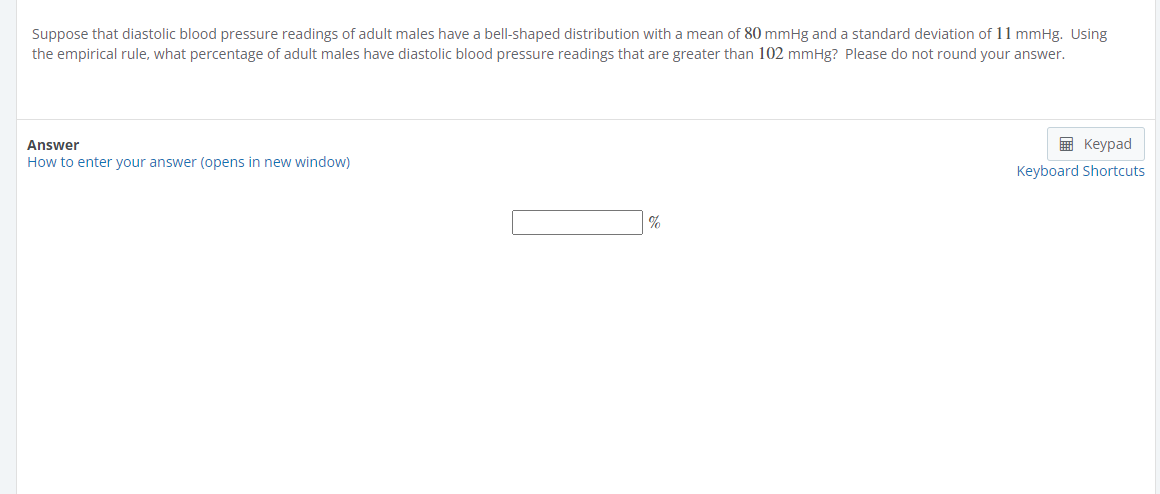Suppose that diastolic blood pressure readings of adult males have a bell-shaped distribution with a mean of 80 mmHg and a standard deviation of 11 mmHg. Using the empirical rule, what percentage of adult males have diastolic blood pressure readings that are greater than 102 mmHg? Please do not round your answer.
Suppose that diastolic blood pressure readings of adult males have a bell-shaped distribution with a mean of 80 mmHg and a standard deviation of 11 mmHg. Using the empirical rule, what percentage of adult males have diastolic blood pressure readings that are greater than 102 mmHg? Please do not round your answer.
Glencoe Algebra 1, Student Edition, 9780079039897, 0079039898, 2018
18th Edition
ISBN:9780079039897
Author:Carter
Publisher:Carter
Chapter10: Statistics
Section10.4: Distributions Of Data
Problem 3GP
Related questions
Question
Suppose that diastolic blood pressure readings of adult males have a bell-shaped distribution with a mean of 8080 mmHg and a standard deviation of 1111 mmHg. Using the empirical rule, what percentage of adult males have diastolic blood pressure readings that are greater than 102102 mmHg? Please do not round your answer.

Transcribed Image Text:Suppose that diastolic blood pressure readings of adult males have a bell-shaped distribution with a mean of 80 mmHg and a standard deviation of 11 mmHg. Using
the empirical rule, what percentage of adult males have diastolic blood pressure readings that are greater than 102 mmHg? Please do not round your answer.
Answer
How to enter your answer (opens in new window)
%
Keypad
Keyboard Shortcuts
Expert Solution
This question has been solved!
Explore an expertly crafted, step-by-step solution for a thorough understanding of key concepts.
This is a popular solution!
Trending now
This is a popular solution!
Step by step
Solved in 2 steps with 2 images

Recommended textbooks for you

Glencoe Algebra 1, Student Edition, 9780079039897…
Algebra
ISBN:
9780079039897
Author:
Carter
Publisher:
McGraw Hill

Glencoe Algebra 1, Student Edition, 9780079039897…
Algebra
ISBN:
9780079039897
Author:
Carter
Publisher:
McGraw Hill